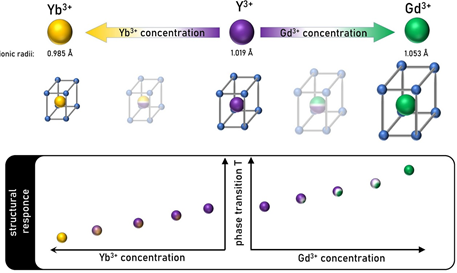Customizing thermometry: Optimizing the operating temperature range of phase transition-based ratiometric luminescence thermometers

Title: Customizing thermometry: Optimizing the operating temperature range of phase transition-based ratiometric luminescence thermometers
Authors: L. Marciniak, W. Piotrowski, M. Szymczak, M. Drozd, V. Kinzhybalo, M. Back
Journal: Chemical Engineering Journal
DOI: 10.1016/j.cej.2024.150363
Although a recently proposed thermometric technique that exploits changes in the luminescence spectrum of dopant ions arising from a thermally induced structural phase transition shows remarkably high application potential due to its high relative sensitivity and thermal resolution, its main limitation is narrow thermal operating range. In order to mitigate this limitation, Prof. Marciniak's group, in their recent work, proposed a strategy to modify the temperature of the structural phase transition and thus the thermal operating range of such a thermometer by co-doping the analyzed host material with ions that induce an intentional mismatch of ionic radii with respect to the host cations. As shown in a study published in the Chemical Engineering Journal, the direct correlation between the degree of mismatch between ion beams and their concentration and the phase transition temperature enables the smooth shift of the operating range between 77 and 550 K. The presented solution was demonstrated as a case study of LiYO2:Eu3+. It should be mentioned that although the proposed solution expands the useful thermal range of the luminescent thermometer, it simultaneously leads to a reduction in the relative sensitivity of the ratiometric luminescent thermometer.
The work presented was funded under the NCN Opus project UMO- 2022/45/B/ST5/01629.
See also
- The Institute
- General information
- Employees
- News
- Scientific News
- Gender equality plan
- Address and contact data
- Research
- Research profile
- List of publications
- List of projects
- International cooperation
- Information in BIP
- Scientific Council
- Organizational structure
- GDPR


